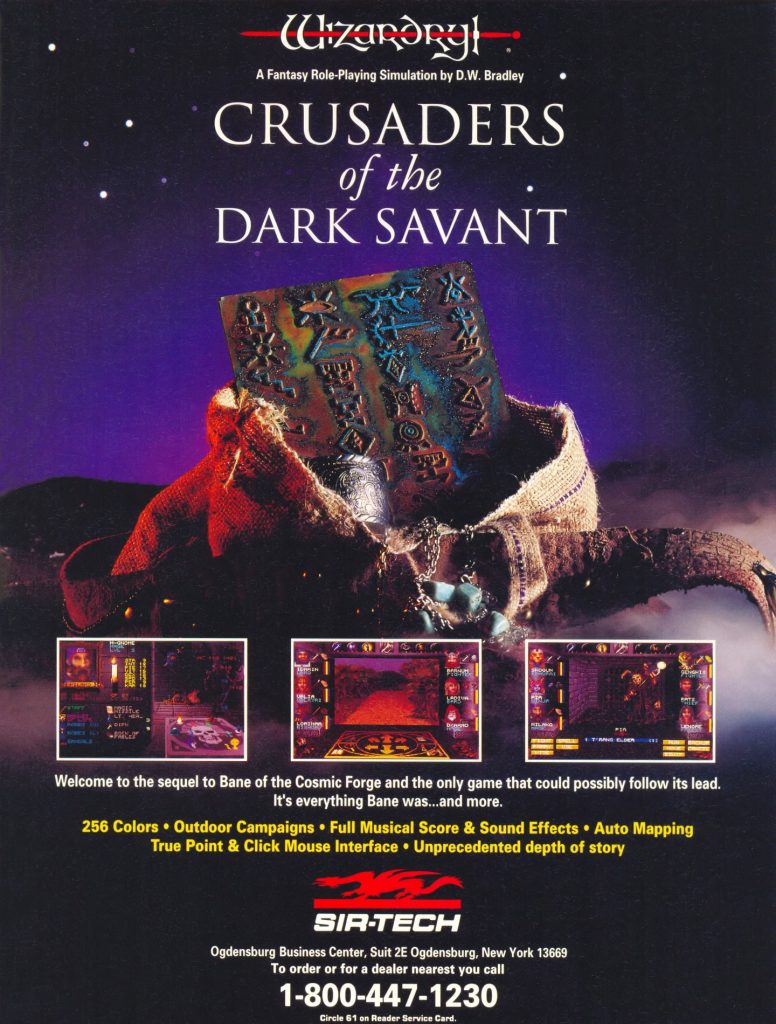Crusaders of the Dark Savant is the seventh game in the very long running Wizardry series of fantasy computer role-playing games. Crusaders was released by Sir-Tech in 1992 while the original Wizardry had been released all the way back in 1981. While the games changed a great deal over the years, Wizardry VII still had a style familiar to fans of the original. Like the previous games in the series, this game was played from a first person point of view with turn based movement and combat.
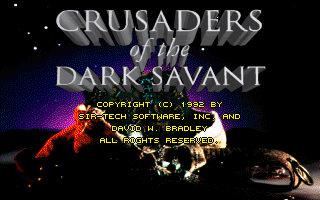
While it was the 7th game in the overall main series of Wizardry, Crusaders of the Dark Savant was the second game in a new trilogy (the Dark Savant trilogy). It was a direct sequel to the previous game, Bane of the Cosmic Forge. You control a party of up to six characters, all of which are under your direct control (in other words, none are NPCs). This party can be imported from the previous game in the series or created from scratch. There are a wide variety of races and classes to chose from, some quite exotic. The previous game had three possible endings so this game has three possible beginning based on the party that you import. There is also a fourth beginning for new parties. When this game was originally released, no reference to the number of the game was made and none can be seen in the ad above. I suspect this was done so as not to deter new players that may have felt like they needed to play the previous game first. Eventually, it did become referred to as Wizardry VII: Crusaders of the Dark Savant as opposed to just Wizardry: Crusaders of the Dark Savant.
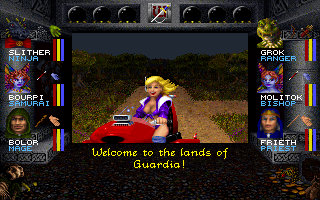
The plot continues where Wizardry VI left off. In simplest terms, a powerful artifact has been hidden on a planet called Guardia. Forces from, well, everywhere, are converging on Guardia to find this artifact. Your party is among those forces. Wizardry VII featured a few firsts in the series and in gaming in general. It was the first of the Wizardry games to feature VGA graphics. It was also the first game to feature sophisticated diplomacy as a part of the game play. According to Wikipedia, it was also one of the earliest games to feature competition from NPCs in which they could obtain quest related items before the player if they took too long. Sadly, it was the second to last Wizardry game, at least in the main series. This was also the first Wizardry game to feature automapping.
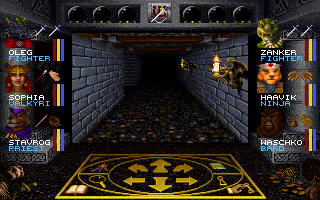
Wizardry was one of the most well known computer RPG series, perhaps behind the Ultima series and maybe the AD&D Gold Box series but even that may be debatable. The series even became very popular in Japan even as its popularity faded in North America. Reviews for the games in the Wizardry series tended to be positive and this one was no exception. There were a few complaints like the smallness of the map and the sometimes difficult to solve puzzles that involved aimless roaming about among them. However, if you could put up with those deficiencies it was an excellent game.
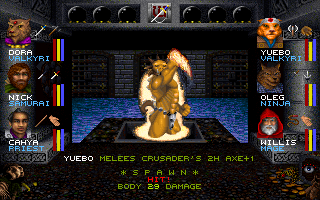
Wizardry VII was first released as a game for DOS based PCs but was later adapted and re-released as Wizardry Gold for Windows. Wizardry Gold would not work with DOS but would work with Windows 3.1, Windows 95, Windows NT and perhaps later versions of Windows as well. Wizardry Gold has been re-released as part of Interplay’s Ultimate RPG Archives in 1998 and a little later in enhanced form as part of the Ultimate Wizardry Archives that included the first seven games. It was also re-released in a bundle with Wizardry VI for Windows and OS X in 2013 and later via GoG and Steam. So the good news is there are a lot of possibilities if you want to give this one a try, and if you are in any way a fan of the old style computer RPGs, you definitely should.
